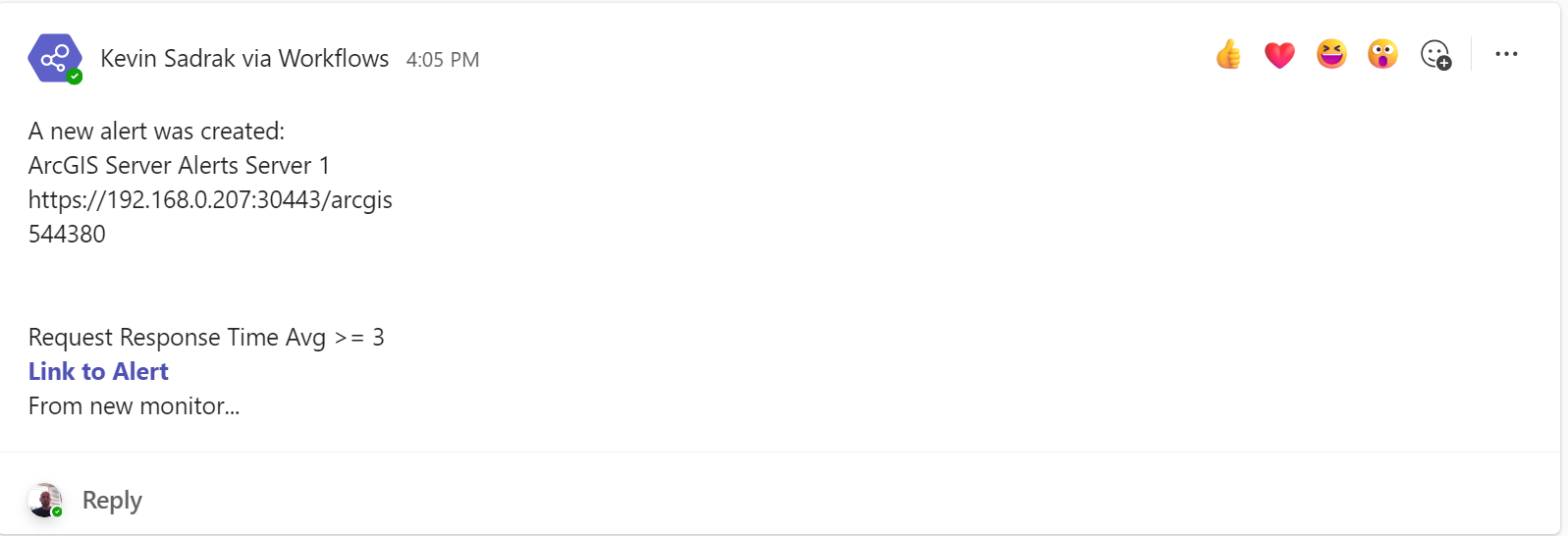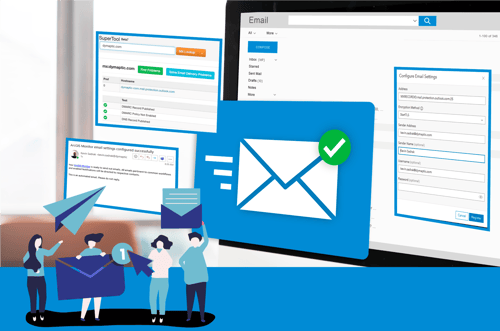ArcGIS Monitor 2023.3 Webhook Messages in MS Teams
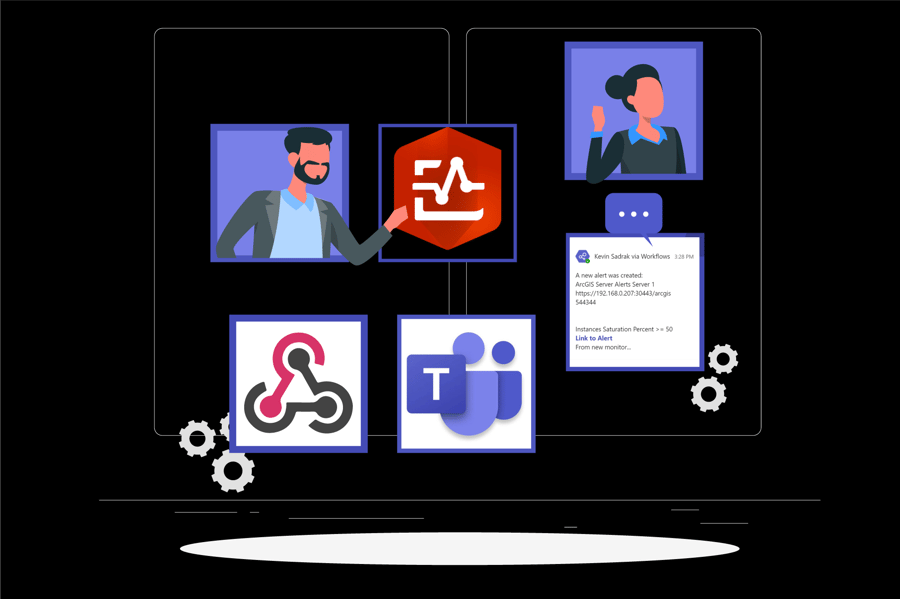
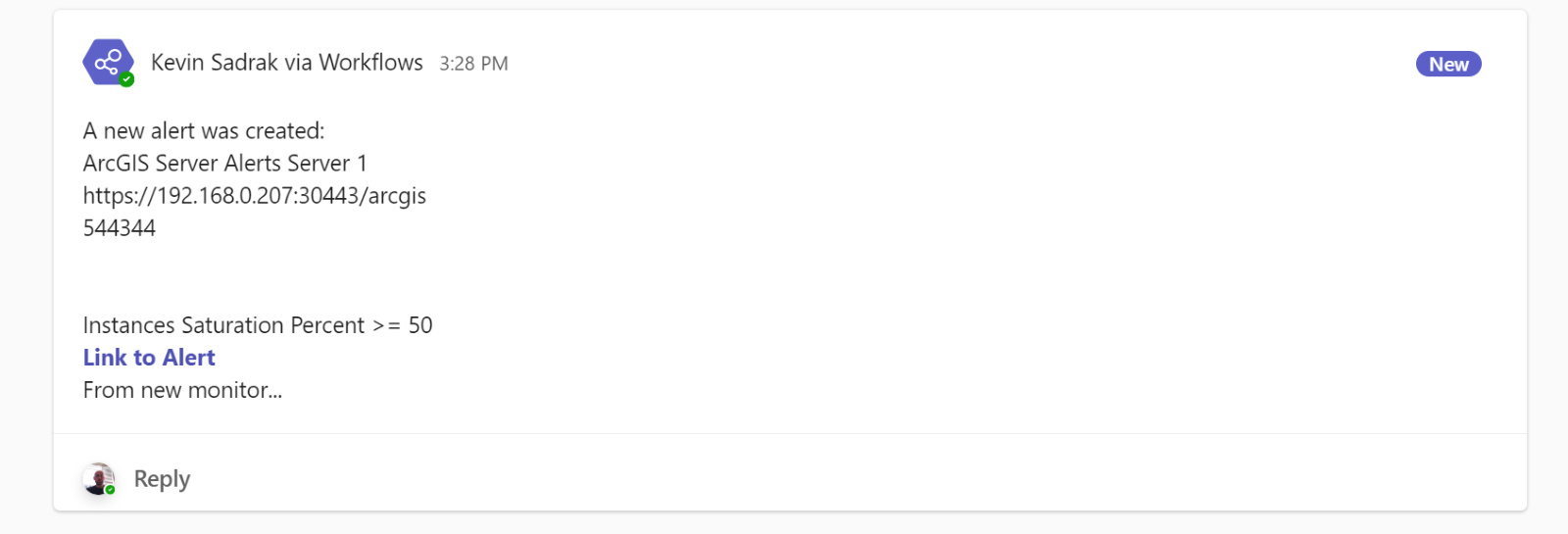
The newest version of ArcGIS Monitor is available, and it packs a lot of great improvements. One of the new features is webhooks from Collections. I talked about creating Teams Webhooks in a previous blog post, but now we are going to discuss using the Monitor Webhooks. The integration will be with Microsoft’s Power Automate and sending chat messages into MS Teams.
The first step is creating a collection. I am specifically interested in one particular ArcGIS Server as it gets the most use out of all the servers we maintain. The collection will query for any component where the Internal Address is equal to the server URL.
Next, we set up the webhook. This must happen in tandem with the Power Automate setup. Inside Power Automate we create a Flow and add in a Trigger for when an HTTP Request is received. Be sure to open Advanced Options and select Post for the method. Copy the HTTP Post URL from the Trigger. Then, go back to Monitor where you have created your webhook, and paste the Trigger URL into the Webhook URL parameter.
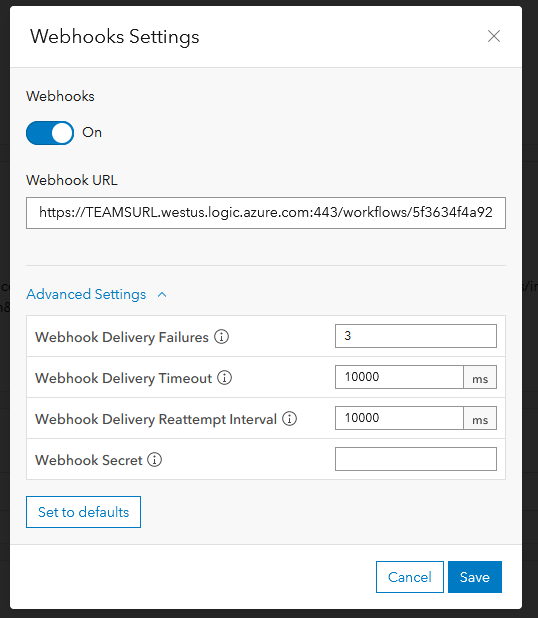
For this example, I am subscribing to the Added Alerts.
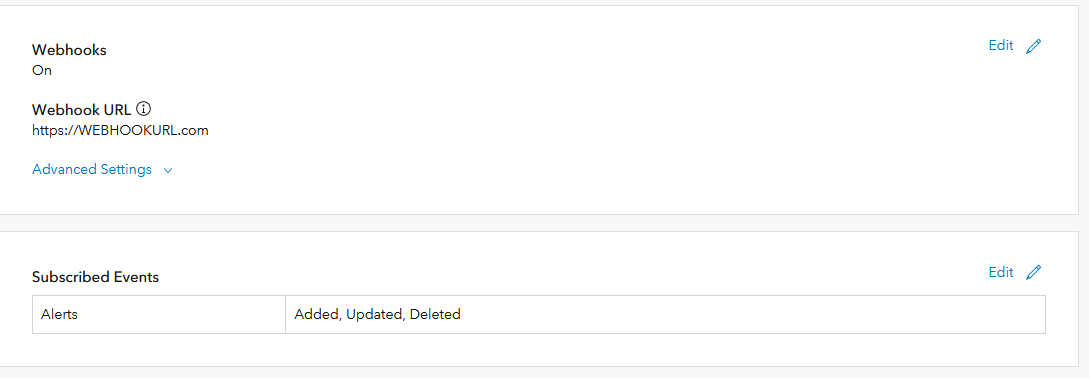
The rest of the work is in Power Automate. The main task here is to customize the message we are delivering to the Teams channel.
Now that the Webhook Trigger is set up, we will iterate through the array of events that the Webhook payload contains. To do this you will add a For Each item to the Flow. Specify the events output from the previous step, which is the webhook Trigger.
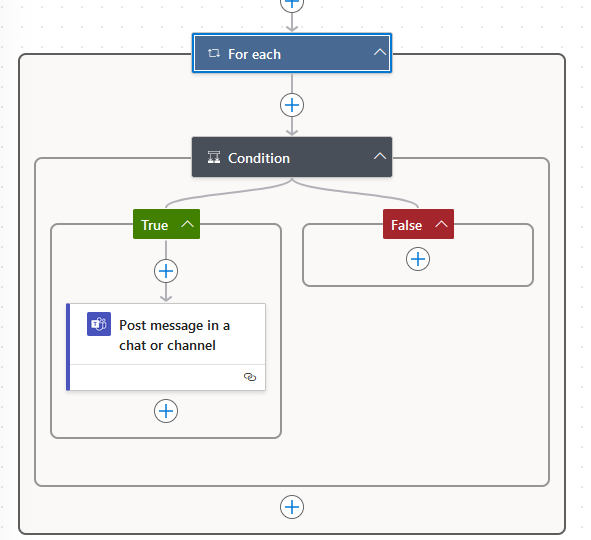
In this case, I only want to see the new alerts, so I added a condition. The condition checks that the operation from the event is equal to “add” and the resource is equal to “alerts”. Now I am only processing new alerts!
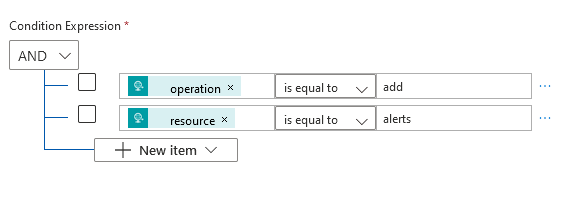
The last step is the message we want to send to our users. Add the Teams item to Post messages in a chat or channel. Set up your Teams and the channel where you want to post the messages.
Now we need to consider the message.
First, we want to tell the user how to get to the alert. We need a link! You’ll notice the alert URL format is:
https://ARCGISMONITOR_URL/arcgis/monitor/alerts/ALERTID/overview
This is great because the attributes of the alert event contain the ID of the alert.
So to make a link we just have to substitute the ID into the URL!
https://ARCGISMOINTOR_URL/arcgis/monitor/alerts/@{item()?['attributes']?['id']}/overview
Once the URL is created, copy it into the edit box of the message URL link for your chat or channel.
The rest of the message contains informational items. One piece of information I wanted to share was the reason for the alert.
This part is a little tricky and there may be an easier way to do it - please let me know if there is! The alert tells us the metric ID, which is an integer. There is not a way I can look this information up. To solve this I created a JSON look-up for all the metric IDs and the metric descriptions. I got this information from the backend PostgreSQL database. That JSON was added to the Power Automate as a parse JSON variable.
Once I had the metric name, I was able to use the JSON look-up to make something more user-friendly. I took the metric ID and substituted the value in the parsed JSON variable like so:
body('Parse_JSON')?[string(item()?['attributes']?['metric_id'])]
As you can see the Flow item is called Parse JSON.
The next item is to specify the condition, which I did using an If statement in Power Automate.
I used a status attribute of 2 or 3 to indicate a warning or critical. There are corresponding attributes for the warning and critical values, and we are making the connections with the if statement.
if(equals(2,item()?['attributes']?['status']),item()?['attributes']?['warning_threshold'],if(equals(3,item()?['attributes']?['status']),item()?['attributes']?['critical_threshold']))
It is a little messy, but it does work.
After the flow was saved and tested, I got a message! I was very happy to see a nice custom-formatted message for myself and the users!
